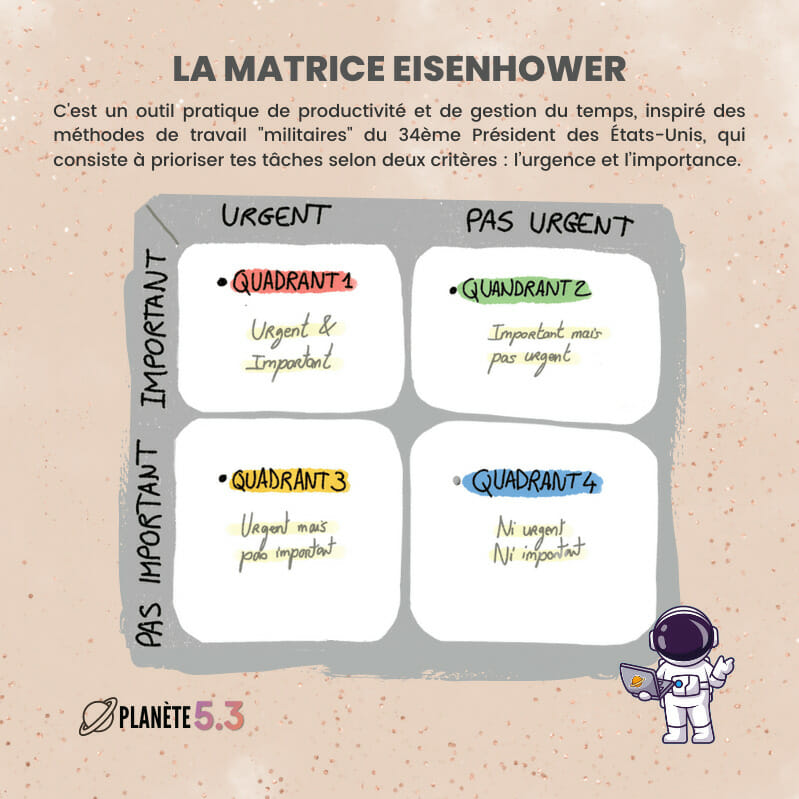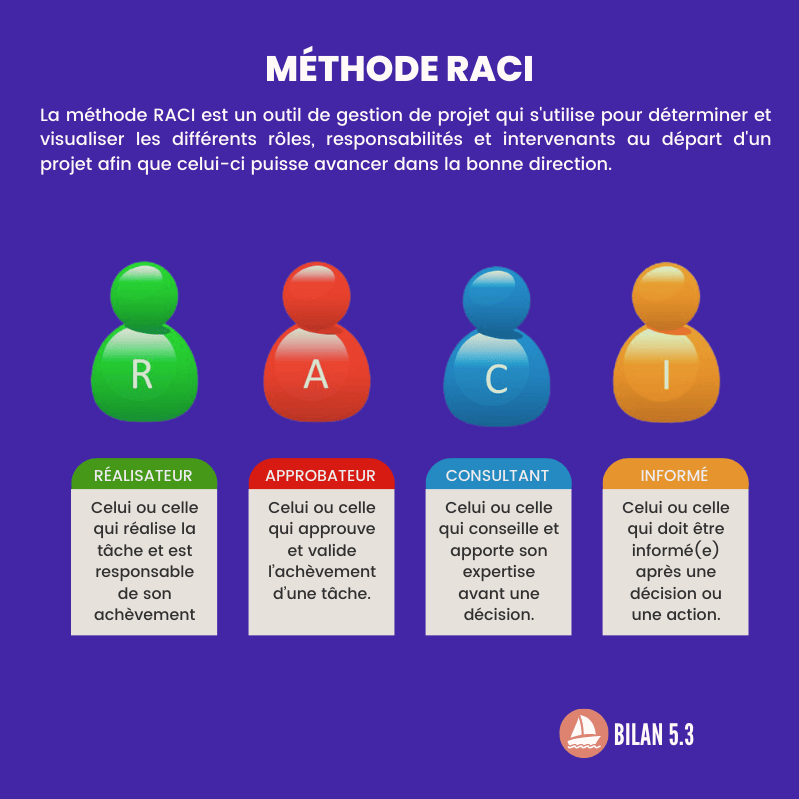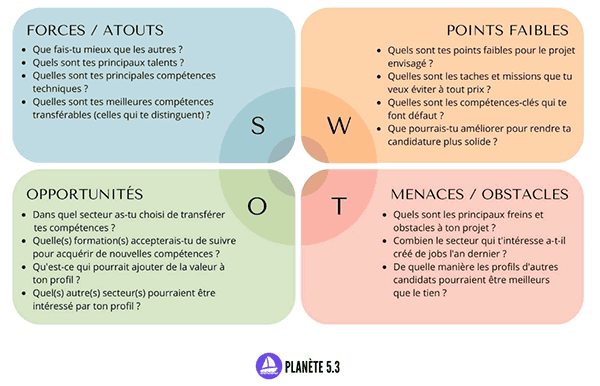
The Eisenhower Matrix is a practical tool for productivity and time managementwhich consists of prioritizing your tasks according to two criteria: urgency and importance. It is presented in the form of 4 quadrants, in which tasks are categorized according to their degree of urgency and importance.
Where does the Eisenhower Matrix come from?
This matrix is inspired by the working methods (which can be described as “military”) of Dwight EisenhowerCommander in Chief of Allied Forces in Europe during World War II and President of the United States from 1953 to 1961 (just before John F. Kennedy).
In practice, the Eisenhower matrix looks like this:

The difference between urgency and importance
An urgent task is not necessarily important and the opposite is just as true. Repairing a breakdown is an urgent mission, while defining a sales strategy is an important task.
— Announcement —
So how do you tell the difference between the two?
An urgent task cannot be postponed. It requires immediate attention, otherwise it could have unfortunate consequences. The more urgent a task is, the more responsiveness it requires on your part.
Important tasks, on the other hand, are essential to achieving your goalsbut in the medium or long term. So you don’t need to devote yourself to it right away. The more important a task, the more it requires advance and rigorous planning.
The effectiveness of the Eisenhower matrix therefore lies in your ability to properly categorize your list of tasks according to their degree of urgency and importance. To do this, calm down and take a few minutes to think about it, it’s worth it!
The time you devote to correctly placing the different activities in the different quadrants of the Eisenhower matrix will be time that you will easily regain later.
How to use it?
To use the Eisenhower matrix, start by listing all the tasks you have to accomplish, even those that seem obvious or trivial to you.
Go over all the tasks one by one and determine if they meet the following two criteria: Is it urgent? Is it important?
Then, place each task in one of four quadrants based on its importance and urgency. You can then:
- Focus on quadrant 1 tasks that need to be accomplished immediately.
- Schedule time to work on quadrant 2 tasks so as not to leave them aside.
- Try delegating quadrant 3 tasks to other people or, even better, automate them to free up time in the future.
- Finally, ignore or delete the tasks in quadrant 4 which, obviously, are not of absolutely vital interest to you. It’s true that we sometimes give too much importance to things that don’t have any.
The Eisenhower matrix is therefore an opportunity to identify those tasks that fill your agenda but which have nothing to do with it (at least for the moment), since they are neither important nor urgent.














